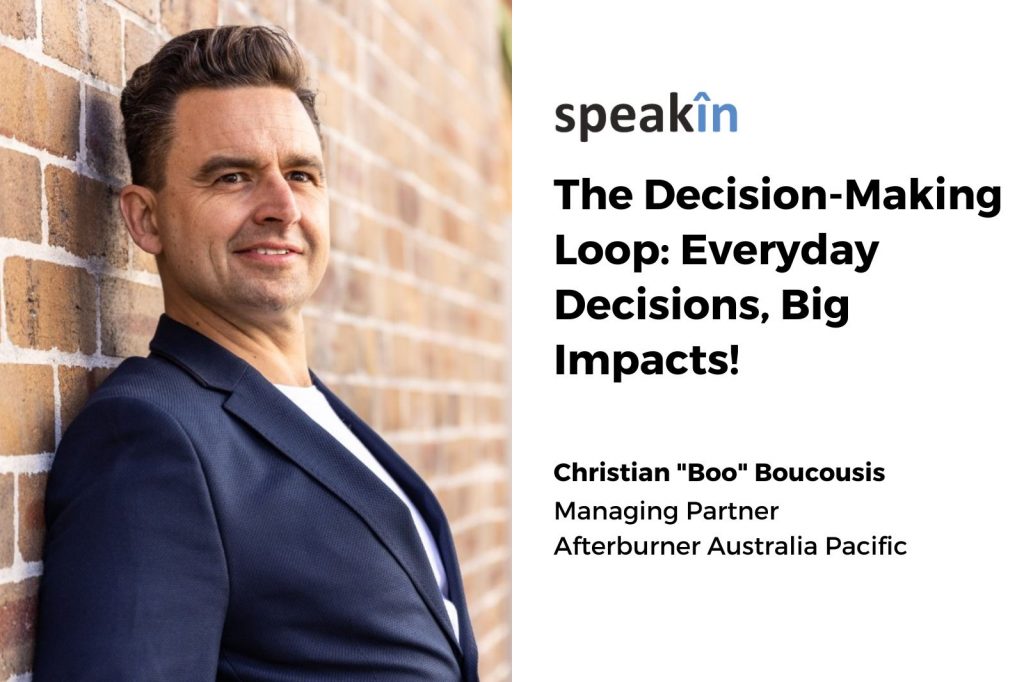The Decision-Making Loop: Everyday Decisions, Big Impacts!

Every day, we make hundreds of decisions, both big and small. Most happen on autopilot, except for some of the bigger decisions that we are more conscious about making. But have you ever thought about the subconscious process that our brain undertakes when making a decision? If you haven’t, I’m about to talk you through the decision-making loop, and how everyday decisions have a big impact on our lives!
Perceive, Process, Project
The brain is an incredibly powerful machine, and autopilot is almost always switched on for many different thinking processes. Decision-making is no exception. However, for us to make better and less biased decisions, we need to be aware of how this automatic process works. The first process in the decision-making loop is perceiving. This is when we perceive a stimulus that will require us to make a decision. This can be something small, like a traffic light going orange, will we speed up or hit the brakes? Or it can be a really big decision at work, home, or the like.
After we have encountered stimuli and perceived them, we move on to processing. For some, depending on the size of the stimulus, this processing step is easy, for others it can be really difficult. Processing requires us to gather information and find internal and external resources. After we have processed the stimuli, we come to projection.
The decision-making loop is heavily influenced by our biases. Our biases heavily influence the projection step in decision-making. When we project, we look into the future and attempt to predict or control the outcome…spoiler alert, we are terrible at predicting the future. So, we need to bring ourselves back to the present and take it one minute at a time. Individuals with an anxious mindset will project into the future with fear, and individuals that naturally work from an optimism bias will look ahead with a more positive view. The further that we project into the future, the worse we become at assessing the potential results. So, we need to bring time back into bite-sized chunks, so that we aren’t so caught up looking into the future that we forget to plan for the next present moment.
Decide & Act
Once we have attempted to predict the future and then brought ourselves back into the present, we must decide. This is where we choose what we are going to do and begin to put together a plan to ensure that when we get to executing, we know the actions we need to take in order to get the best result. Depending on the size and importance of the decision, deciding may take longer and require more collaboration in order to come to a sound conclusion. And that’s okay!
Now that we’ve made up our minds, and we have steps in place to guide our actions, it is time to act. Executing the decision may be a one-time action or it might be something that we do daily, but either way, we must do it to the best of our abilities. Success in the future relies on us acting in ways that align us with our goals and purpose in the now.
When executing is an everyday action, it is essential that we debrief often so that we can realign ourselves with our goals and continue to evolve as the decision plays out. When the decision requires long and drawn-out actions, we can become complacent because we get into a routine and forget the bigger picture. No matter the size of the decision, we cannot afford to become complacent! Realign with your goal and decision daily!
Result, Impact, Reflection
After we have taken action, we need to look at the effects of those actions and where we now sit on our journey towards the goal. Are you standing on top of the success of your goal? Is your goal still a little bit further away? Did this decision even take you in the right direction? All of these questions will give you more decisions to then do this process over and over again, but they are important questions to ask to evaluate where you stand after executing.
So, we either got our intended result, or we didn’t. Either way, the decision still had an impact, positive or negative. How did this decision impact you, your team, your resources, and your future decisions? These questions lead us into our debrief. Debriefing is a deliberate reflection on what took place. It isn’t a time for glossy and polished answers that glide over the issues, mistakes or hiccups that occurred. Debriefing needs to be a safe and honest space to reflect and discuss with candour what could be done better next time.
In my eyes, there will always be something to improve upon, so there should always be something to reflect upon and discuss how we can do it better in the future. Debriefing allows us to evolve as people, as teams, and as businesses as a whole. Without this honest space for feedback and discussion, there is no way we can move forward and better ourselves for more successful results next time! Don’t be afraid of the answers to these hard questions, for they only propel you forward, if you choose to see them as a positive pushing force. We’re back to the start of the decision-making loop, we perceive new stimuli and we do it all again!
Think, Feel, Do…Better!
Understanding the different stages of decision-making, makes us better individuals, teams, and leaders. While bias underpins lots of our thoughts and feelings, when we know our purpose, we can invest these feelings and thoughts into the right things! We do this big decision loop thousands of times per day, but with awareness, we can’t help but think, feel, and do better!





